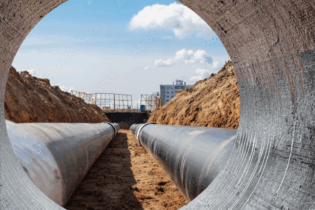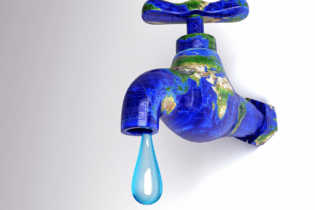Hundreds of thousands of people have been affected by heavy flooding along the Niger River over the last few weeks. Niger, Mali and Benin have been particularly hard hit, with dozens of deaths, tens of thousands of houses destroyed and vast areas of farmland submerged by rising waters.
In Niger alone, more than half a million people have been affected by floods. As of Sep. 12, 75 people had been killed, 37 000 homes submerged and crops destroyed in 150 of the country’s 366 communes, according to prime ministerial spokesman Oumarou Keïta, who also sits on Niger’s Inter-ministerial Committee for Prevention and Monitoring of Floods. Flooding has been especially severe in Dosso, in the southwest, Tillabéri, in the west, and the capital, Niamey. The scale of devastation in Niamey is such that Nigerien authorities have had to shelter displaced people in schools while preparing better sites for temporary housing. “Since our house collapsed on Aug. 21, I’ve been living in this school with my husband and five children in very close quarters. There are three families sharing this single classroom with us,” said Fatouma Alzouma, 47, a resident of Saga, one of the Niamey neighbourhoods worst affected by the floods. “We have had some assistance, but the food and other support they have given us is insufficient because people who haven’t lost their homes have fraudulently got their names onto the lists,” said Alzouma. Koné Soungalo, a hydraulic modelling expert at the Niamey-based Niger Basin Authority, said the city is vulnerable to flooding because of the flat terrain. Heavy rainfall throughout the two million square kilometre river basin has swollen the volume of water, he told IPS. Accelerated build-up of sand on the bed of the river – caused by degradation of land by human activity elsewhere in the river system – has aggravated the problem. “The siltation obstructs the river’s flow, and causes a sharp rise in the water level over its banks here, as we saw a few days ago.”The volumes of water are unprecedented, said Soungalo. “The water level climbed to 618 centimetres on 21 August, a peak higher than anything recorded in our database, which goes back to 1929.” The Nigerien minister for agriculture, Oua Seydou, said 3,000 hectares of irrigated crops had been submerged, doing an estimated 5.8 million dollars of damage.
Further downstream, floodwaters killed seven people at Karimama and Malanville in northern Benin. In Nigeria, the National Emergency Management Agency said that water levels in two large reservoirs along the Niger River were at the highest level seen in 29 years, and ordered evacuation from low-lying areas in five states.
The Nigerian Red Cross reported that 137 people had already been killed by flooding in that country since July, with 35 000 more displaced.The threat is not limited to the 4 000 kilometre long Niger River. Heavy rains across West Africa are also causing other rivers to burst their banks. The UN Office for the Coordination of Humanitarian Affairs reported that more than 400 000 people had been affected by floods In Chad, 255 000 hectares of crops were submerged and more than 73 000 houses destroyed. That country is preparing to spend two million dollars on emergency assistance and has asked for help from donors and humanitarian agencies amid fears of food insecurity. An emergency release of water from a dam in Cameroon caused the Benue River to overflow, killing 30 people downstream in Nigeria.
In Senegal, 13 people have been reported killed by floods, with a lack of proper sanitation and drainage blamed. Issoufou Maïgari, a hydrologist at the Agrhymet Regional Centre based in Niamey, said such rapid flows in the Bafing, a tributary of the Senegal River, have not been measured since 1961. This year’s flooding in the Niger River basin only adds to the many challenges faced by governments in the region. The floods ironically follow several seasons of drought that have devastated farmers and herders in the Sahel.
Also worrying are various reports dating back to June and July that early rainfall in southern Algeria and northern parts of Niger, Mali and Chad created conditions for unusually large swarms of locusts that could threaten crops later this year. Effective control of these pests, assistance to farmers, delivery of humanitarian aid – even a proper assessment of the various threats to agriculture and food security – are all complicated by armed rebellion in northern Mali and lower but worrisome levels of insecurity in Algeria, Libya, Niger and Chad. The situation underscores the interdependence of people across borders. Averting a full-scale humanitarian crisis in the Sahel this year may require coordinated efforts throughout the region, experts say. Source: allAfrica.com







